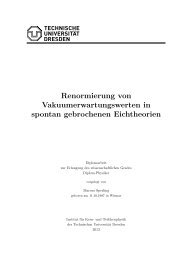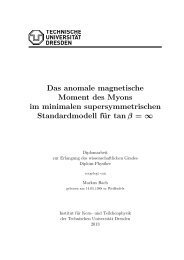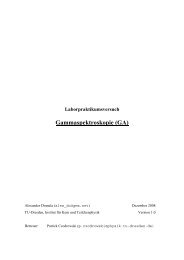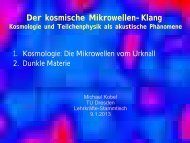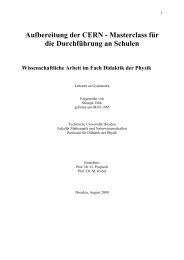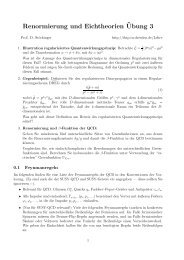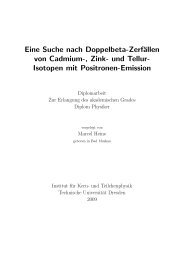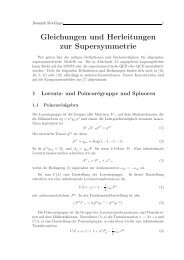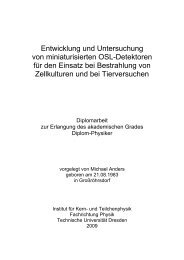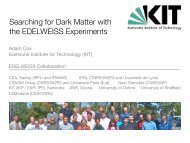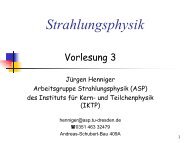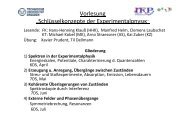a design study for a cobra upgrade to - Institut für Kern- und ...
a design study for a cobra upgrade to - Institut für Kern- und ...
a design study for a cobra upgrade to - Institut für Kern- und ...
You also want an ePaper? Increase the reach of your titles
YUMPU automatically turns print PDFs into web optimized ePapers that Google loves.
5.3 Monte Carlo studies of the <strong>design</strong>ed <strong>upgrade</strong> 79<br />
For calculations, 238 U and 232 Th decay chains in equilibrium were assumed.<br />
For the case of CsI crystals, this is not likely <strong>to</strong> be, as the different<br />
chemical and physical properties of the elements of the Th and U<br />
decay chain will lead <strong>to</strong> a broken equilibrium or single impurities and<br />
their short-lived progenies. However, as this is a backgro<strong>und</strong> estimation,<br />
it was considered <strong>to</strong> be sufficient as an upper limit.<br />
An analysis, considering the backgro<strong>und</strong> reduction of 99 % of all<br />
events, emitting alpha particles in the scintilla<strong>to</strong>r, with a pulse shape<br />
discrimination was not used here, owing <strong>to</strong> the already small event<br />
rates. Such analyses should consider the effect of δ-electrons, which are<br />
produced by alpha particles, but lead <strong>to</strong> an electron-event like pulse<br />
shape.<br />
137 CS is an anthropogenic radioactive iso<strong>to</strong>pe. It is a beta-emitter,<br />
decaying with 94.4 % branching ratio and a half live of 30.07 years, <strong>to</strong><br />
the metastable state of 137m Ba. The emitted electron has an endpoint<br />
energy of 514 keV. After half life of 2.55 min 137m Ba deexcites <strong>to</strong> the<br />
gro<strong>und</strong> state <strong>und</strong>er emission of a 661.7 keV γ. Both particles are not<br />
coincident in time. In 5.6 % 137 Cs decays directly <strong>to</strong> the gro<strong>und</strong> state<br />
of 137 Ba, emitting an electron with an endpoint energy of 1175.6 keV.<br />
Deniz et al. [57] announced <strong>to</strong> reduce the 137 Cs contamination in CsI:Tl<br />
powder by using purified water instead of usual processing water<br />
which contained 0.1 mBq/l.<br />
Figure 5.13: Decay scheme of 137 Cs [16]<br />
The 137 Cs contamination is no serious backgro<strong>und</strong> <strong>for</strong> the double beta<br />
signature. The main decay channel produces a noncoincident electron



